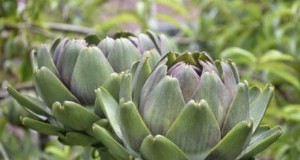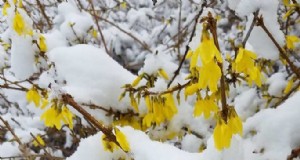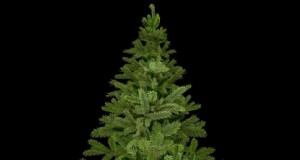
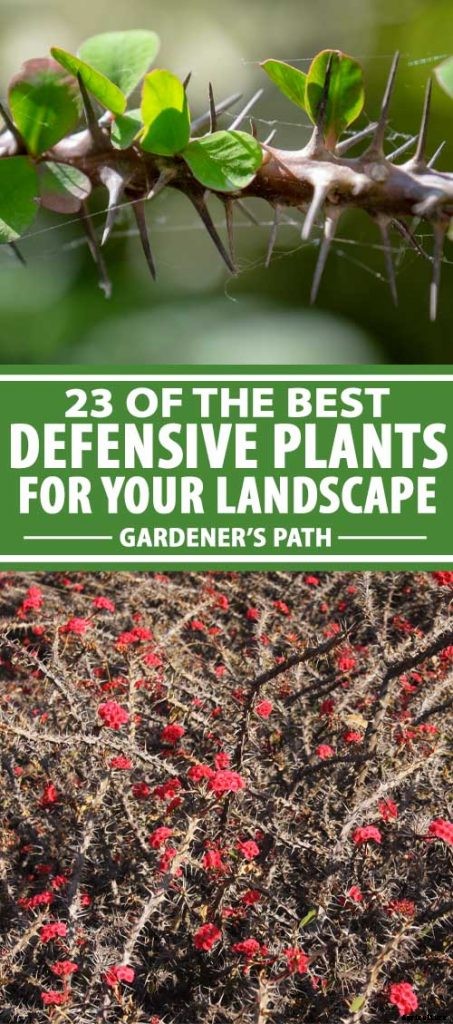
電子セキュリティシステムが登場するずっと前に、 植物は、家屋を部外者の略奪から保護するための「生物学的かみそりワイヤー」として使用されました。www.modernagriculturefarm.com または家畜の囲いとして。
とげのあるものを戦略的に植えることによって、 とがった、 密な茂みやヘッジ、 景観を損なうことなく、侵入者を阻止するための効果的なバリアを作成できます。
多くの観賞用低木には、悪質なとげやとげのある葉があります。 慎重に配置すると、 彼らは有刺鉄線や高価な柵に頼ることなくあなたの家にセキュリティの層を追加することができます。

私たちは、ホームセキュリティの景観に追加するのに最適な防御植物のいくつかを調べました。 さあ、飛び込みましょう!気をつけて…
これが私がカバーするものです:
- あなたの風景の中で防御的な植物を使用する方法
- ホームセキュリティのための最高の防御プラントの23
- アガベ
- メギ
- バレルサボテン
- ブラックソーン
- ブラックベリー
- ブーゲンビリア
- カリフォルニア人 フクシア
- 中華ナツメ
- チョヤサボテン
- セイヨウヒイラギ
- いばらの冠
- 悪魔のウォーキングスティック
- ジャイアントルバーブ
- ハーディオレンジ
- ホーソーン
- ハニーローカスト
- 日本のマルメロ
- メスキート
- オコティロ
- オレゴングレープ
- ポーキュパイントマト
- ウチワサボテン
- ピラカンサ
あなたの風景の中で防御的な植物を使用する方法
防御植物を抑止力として使用し、招待されていないゲストに不快な歓迎を提供するためのさまざまな方法があります。

あなたがあなたの風景のために植栽を選ぶとき、 それらがあなたの成長ゾーンに適していることを確認することを忘れないでください。あなたが成熟した高さを心に留めていることを確認してください、 そしてあなたが選んだ種があなたの地域で侵略的であると考えられるかどうか。
植える前に、 逃げ道をよく考えてください。火災やその他の災害の場合、 植栽によって逃げ道が妨げられたり、怪我をしたりすることは望ましくありません。これは、2階の窓の場合に特に重要です。
周囲
あらゆる資産の最初の防衛線は境界線です。
とげのあるつる植物は、侵入者になる可能性のある人がフェンスを拡大縮小することを困難にします。 とがったヘッジは装飾的な自然の障壁を作ることができます。いたずらメーカーはまた、衣服の破れや皮膚の切断など、法執行のために貴重な手がかりとDNAを残す可能性があるために延期されます。
つる植物をフェンシングの上部に沿って訓練することは効果的です、 脆弱なコーナーでの低木や茂みの注意深い配置と同様に、 または大きな柵の内側に。
周囲の境界線をより大きく計画します。 後ろのとがった種、 以下、 正面の同様に歓迎されない標本。これは参入障壁を提供する可能性がありますが、 しかし、それでもあなたの財産全体にある程度の可視性を与えることができます。
Windowsの場合
1階の窓は、多くの場合、泥棒が簡単にアクセスできる場所です。あなたのかわいい花壇をつま先立ち、 それはあなたのラップトップで素早く逃げるためにあなたの家に簡単に飛び乗ることです。

低成長を配置することを検討してください、 これらの窓の下にあるとがった植物は、アクセスをより困難にしますが、植物の成熟した高さを確認してください。そうしないと、視界が遮られる可能性があります。
あなたがあなたの植栽を計画するとき、 ヒューズボックスをふさがないように注意してください。 マンホール、 またはメンテナンスの目的でアクセスする必要があるかもしれないあなたの家または財産の他の領域。
登山者、 木、 およびウィンドウボックス
あなたの家の側につる植物をトレリス、 特に便利な地域では、 登ることができる排水管は、猫泥棒が2階の窓に忍び込むのを思いとどまらせることができます。

バルコニーや窓へのアクセスを提供する可能性のある木を剪定することを忘れないでください。彼らの努力をさらに阻止するために、あなたのバルコニーの端にある小さなサボテンでいっぱいの魅力的であるがあまり歓迎されないウィンドウボックスを考えてみてください。
ホームセキュリティのための最高の防御プラントの23
いたずらメーカーからあなたの財産を守るための最高の植物のいくつかを見てみましょう。
1.リュウゼツラン
の最も一般的なメンバー アガベ 属は A.アメリカーナ 、 「センチュリープラント」または「セントリープラント」としても知られています。
メキシコとアメリカ南西部原産、 このとがった成長の遅い多肉植物は、 USDA耐寒性ゾーン 8-11。

世紀の植物はたくさんの太陽と水はけの良い土壌を必要とします。それは干ばつ耐性があります、 xeriscapesに最適、 吸盤から簡単に繁殖します。
それは太くて直立した形で成長します、 端に厄介なポイントがあるとげのある葉。これらの短剣のような葉のそれぞれは、3〜4フィートの長さに成長する可能性があります。 植物に6から8フィートの広がりを与えます。
高さ3〜6フィートの成熟した高さで、 リュウゼツランは手ごわい障壁を作ります。
通常は青緑色、 利用可能な多彩な品種があります、 そのような A.アメリカーナ 「マルギナタ、 ’は、明るい緑色の葉と黄色のエッジがあります。

あなたは保護バリアとしていくつかを植えることができます、 または窓の下で個々の標本を使用し、 または侵入者に厄介な驚きを与えるためにフェンスの内側に。
植物がどれだけ大きく成長できるかに注意してください。あなたがあなたの家の近くにそれを植えているならば、 それでも窓を脱出ルートとして使用できるかどうかを検討してください。
には多くの種があります アガベ 属、 印象的な世紀の植物よりもはるかに小さいものもありますが、 と他の人はとげがありません。
「クジラの舌」 ’ A. ovatifolia 、 低い、 より密度の高いプロファイル、 3〜4フィートの成熟した高さで。

「クジラの舌」は、低い柵をさらに保護するか、玄関に通じる階段の両側に植えることができます。低いプロファイルは、植物の上部の良好な可視性を提供します。
この植物を庭に追加する場合は、必ず注意してください。棘は悪質で、簡単に目を抜くことができます。適切な保護服を着用し、 安全メガネを含む、 あなたがそれを削減したり、近くでガーデニングをしているときはいつでも。

A.アメリカーナ アマゾン経由で入手可能な裸根植物
彼らが繁栄する地域では、 通常、これらの植物は地元の園芸用品センターや苗床でさまざまなサイズで見つけることができます。
または、 あなたは裸の根を買うことができます A.アメリカーナ からの植物 アマゾン経由のカリフォルニア種子会社 。
ここでリュウゼツランを育てる完全ガイドを読む 。
2.メギ
属 メギ 高さが3〜10フィートのさまざまな400種類以上の常緑低木と落葉低木が含まれています。
日陰耐性、 干ばつに強い、 ゾーン4には耐えられません メギはほとんどすべての種類の土壌で育ち、メンテナンスはほとんど必要ありません。

多くの場合、観賞用として植えられ、 魅力的な葉は暗い面を隠します。枝は、各ノードに1本のとげがある葉で覆われています。 これにより、メギは密度の高いものを作るのに理想的です。 とげのある生け垣、 または侵入できない障壁。
一部の外来種は侵入種と見なされ、一部の州ではそれらの成長が禁止されています。 ですから、植える前に必ず地元の条例を確認してください。また、すべての品種にとげがあるわけではないことに注意してください。

メギ、 B. thunbergii 、 その鮮やかな赤のおかげで「燃える茂み」としても知られています、 印象的な葉、 19世紀に米国に導入され、 そして人気のある観賞用低木になりました。
それは通常、盛り上がった形で成長し、裏庭の脆弱なコーナーを保護することができます、 または窓の下に植えられたときにとがった歓迎を提供します。
ヘッジに適した品種はたくさんあります。高さ3〜4フィートの品種は、私道や歩道の側面に沿って非常に便利な障壁になります。 境界ヘッジとしても、 上部の可視性を可能にします。

興味のある別の種は、ジュリアンメギです。 B.ジュリアナエ 、 中国中部原産、 それは高さ8フィート、幅4〜6フィートまで成長します。最も丈夫なタイプの1つ、 ジュリアンメギは手ごわい棘を持っています。
活発な栽培者、 この常緑樹は、大きな周囲の生け垣に剪定するか、そのままにしておくことができます。秋に、 ウィンターグリーンは魅力的な黄色い花と紺色の果実を生み出します。
これらの植物を扱うときは手袋を着用することを忘れないでください、 子供やペットを近づけないでください。
考慮すべき2つのオプションは次のとおりです。
急成長 B. thurnbergii 「クリムゾンピグミー」はゾーン4〜8に適しています。 特徴的な、 真っ赤な葉と小さな黄色い花が さまざまな花粉交配者 。
矮性品種、 それは2〜3フィートの高さで最高になり、便利になります、 低い、 生け垣として、または窓の下に植えられたときのとがった障壁。

「クリムゾンピグミー」
「クリムゾンピグミー」を見つけることができます ネイチャーヒルズ保育園から 。
B. thurnbergii 「タンジェロ」は装飾性が高く、保護効果もあります。

「タンジェロ」
成熟時に3〜4フィートの高さに成長し、 新しい成長は明るいオレンジ色で、独特の黄色の境界線を発達させます。
「タンジェロ」を探す ネイチャーヒルズ保育園で 。
ここでメギの茂みの成長についてもっと読む 。
3.バレルサボテン
サボテンはあなたの防御的な植栽に興味深い追加をします。私の個人的なお気に入りの1つは、バレルサボテンです。 「義母の席」としても知られています。
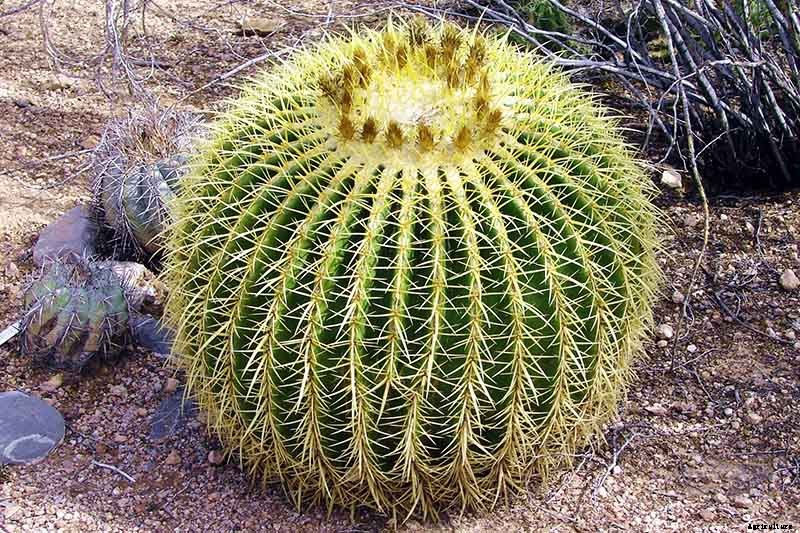
樽型のサボテンを含む2つの属があります: エキノカクタス と フェロサボテン 。
その名前が示すように、 バレルサボテンは丸みを帯びた形に成長し、 バレルの上部から下向きに放射状に広がる各リブから突き出た悪質なスパイクがあります。
確かに誰も、 でもない 僕の 義理の母、 その上に座るつもりです。喜んでではなく、 少なくとも。ほとんどはゾーン9-11の栽培者に適しており、装飾的な話し合いのポイントと効果的な抑止力の両方として2つの役割を果たします。

E. grusonii 「ゴールデンバレル」はメキシコ原産で、成熟時に同じ直径で高さ3フィートまで成長する可能性があります。しかし、それらの次元に到達するには長い時間がかかります。
バレルサボテンは砂漠の条件で繁栄し、多くの太陽とごくわずかな水を必要とします。それはいくらかの霜に耐えます、 しかし、長期間ではありません。
1つまたは複数を窓の下の石庭に植えることができます。 またはフェンスラインの下部にあります。

家の近くで育てるときは、逃げ道の可能性を覆い隠さないように注意してください。 またはメンテナンスが必要な領域。
小さな標本はコンテナで育てることができます、 戦略的に配置されたウィンドウボックスは、日和見的な盗難に対して効果的です。
リュウゼツランを植え込むことで、小さな標本の上からの視認性を維持しながら、かなり通行不能なバリアを提供できます。

E. grusonii 「キンシャチ」サボテン
3インチの「ゴールデンバレル」サボテンは アマゾン経由のPlantaflorUSA 。
とげは容赦ないので、これらの植物を扱うのは難しいです。あなたはあなたが厚い革の手袋と他の適切な安全装置を身に着けていることを確認する必要があるでしょう。子供やペットはそれらから十分に遠ざける必要があります。
4.ブラックソーン
ブラックソーン、 サクラ属spinsoa 、 秋に何度も私の肉を1ポンド持っていました。
小さなダークベリー、 「スロー、 」はスロージンを作るための私のお気に入りです。彼らはタルトです、 でも砂糖をたっぷり加えて クリスマスに間に合うようにジンのボトルをおいしいリキュールに変えます。

スローを収集し、 しかし、 面白くない。それらは密な枝と邪悪なとげのある落葉低木で育ちます。
小さなベリーの枝を通り抜けるのは、その暗闇に大きなスパイクがあるため、苦痛な経験になる可能性があります。 ほぼ黒、 吠える。
とげは絡み合った枝に直角に突き出ており、長さは最大2インチです。密集した茂みで育ち、 ブラックソーンは、その原産のイギリスで一般的に見られます、 オープンフィールドの端に沿って。

ゾーン4〜8の栽培者に適しています。 ブラックソーンの低木は、高さ10フィートまで成長する可能性があります。 最小限の剪定で、物件の周囲に手ごわい障壁を作ることができます。または、 それはきちんとした、しかし密で侵入できない生け垣に剪定することができます。
落葉性で、 冬に葉を落とします、 ややぎこちなく見えます。そのきれいな白い花は春の到来を告げます、 葉の前に現れます。
成長の早いブラックソーンは、ほとんどすべての土壌に耐えます。 やや耐塩性があります。確立されると、 通常の湿気を除いてほとんど注意を払う必要がないため、追加の灌漑がない非常に乾燥した地域には適していません。

ブラックソーンは、部分的に日陰または日当たりの良い場所で成長します。特に装飾的ではなく(特に冬)、高さが視界を損なう可能性があるため、家から遠ざけることをお勧めします。
このプラントで作業するときは特に注意してください。 とげは皮膚の下で折れて敗血症になるという厄介な習慣があるからです。ペットを飼っている場合は、このことを覚えておいてください。 子供達、 または家畜が使用するパドックの近くに植えています。
5.ブラックベリー
ブラックベリーという名前は、属の多くの種を指します キイチゴ属 多年生の冠から成長し、タルトを生成します、 真夏から秋にかけて直立した杖の食用果実。ゾーン5〜11の栽培者に適しています。 いくつかの品種はゾーン3に耐えられません。

最も一般的な種、 R. fruticosus 、 は 一部の地域では侵襲的と見なされている 急速に成長する能力のおかげで、 そしてそれはとがった密な茂みを形成します、 絡み合った杖、 高さ5フィートまで。
ブラックベリーはラフです、 絡み合った枝を持つとげのある低木、 生け垣に沿って自生しているのがよく見られますが、 森林地帯では、 または無視された低木地地域。
多年生植物ですが、実を結ぶ杖は隔年です。彼らは2年目に実を結び、その後死にます。ブラックベリーは活発な栽培者であり、 毎年新しい杖を生産します。
茎は鋭い棘で覆われていて、 種によっては、 直立または後続の形で成長します。
末尾のタイプには、かなりの剪定とサポートが必要です。 特に彼らが庭の領域を乗っ取るのを防ぐために。
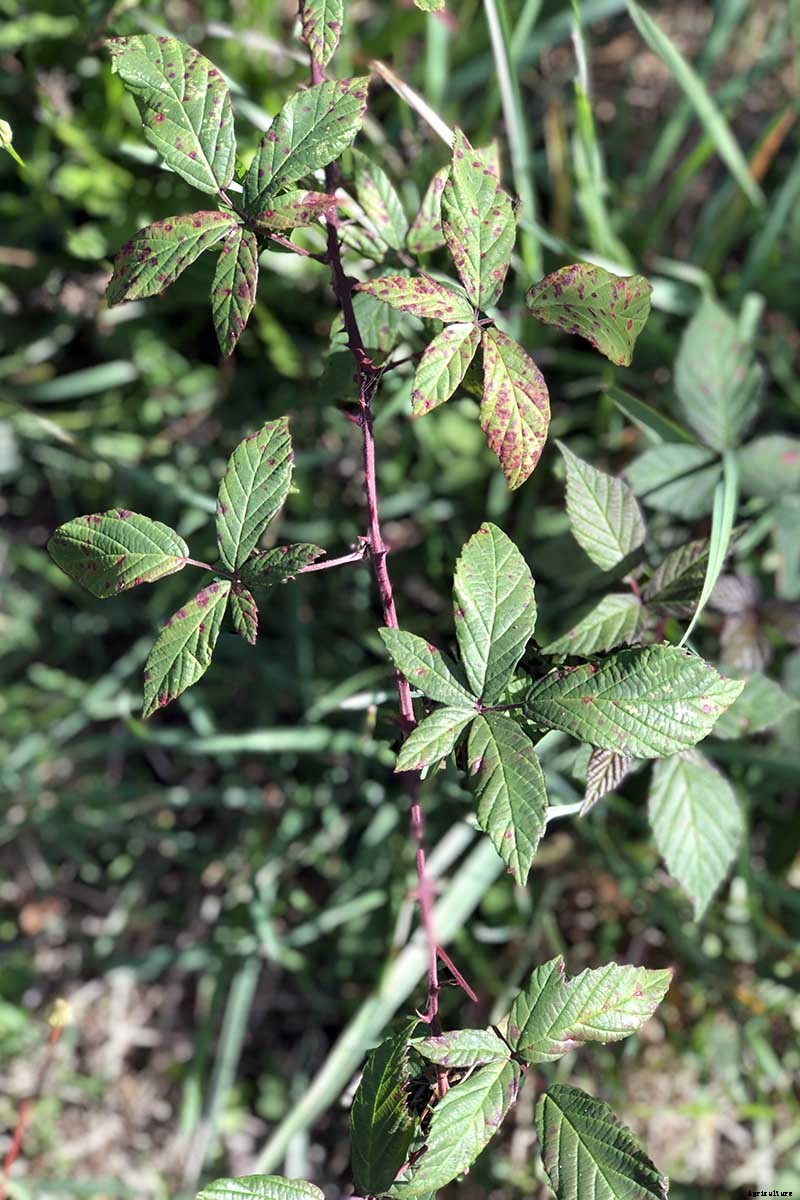
勤勉な剪定で、 直立した品種と後続の品種の両方を、建物またはフェンスの側面で訓練することができます。 または彼らは自然に成長し、大きな庭の露出した隅を埋めるために去るかもしれません。
彼らは庭の低木の最も装飾的なものではないので、 ブラックベリーは家から離れて成長するのに最適です、 小屋の側面を保護するために、 または、フェンスラインの上部に沿ってトレーニングします。
棘は革を引き裂く可能性があり、容赦はありません。収穫や剪定の際に手袋を着用するのを忘れた場合に気付くでしょう。
多くのとげのない栽培品種が開発されました、 あなたが買い物をしているとき、それでこれを覚えておいてください。

「マリオン」ブラックベリー
キイチゴx 「マリオン」は、長さ20フィートの杖を生産する雑種品種です。 おいしくジューシーなベリー、 ととげが目立つ。
あなたは「マリオン」植物を見つけることができます ネイチャーヒルズ保育園で 。
ブラックベリーの栽培について詳しくは、こちらをご覧ください 。
6.ブーゲンビリア
ブーゲンビリアは、熱帯気候でほぼ一年中色とりどりの苞葉で鮮やかに咲く素晴らしい観賞用のつる植物または低木です。
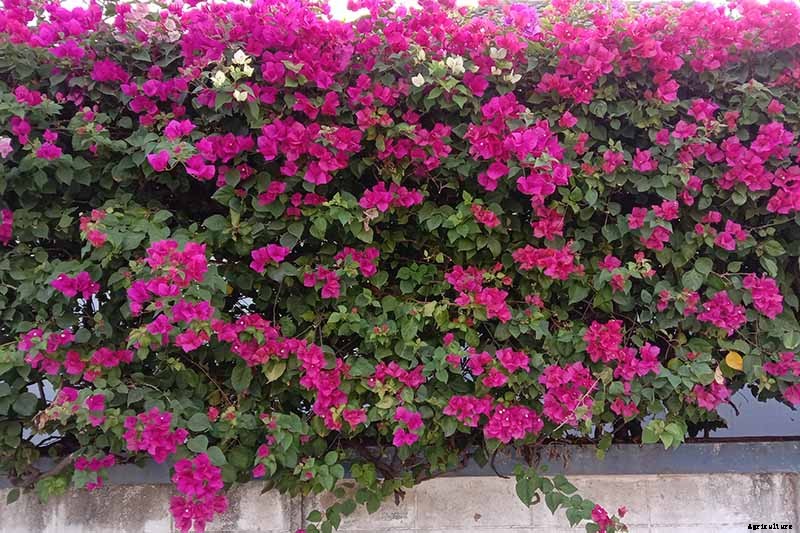
ゾーン9以上の栽培者に適しています。 この植物は熱と日光の下で繁栄します。
ブーゲンビリア spp。 18種で構成され、 いくつかのつる植物と他の木質の低木。この急成長している植物は南アメリカ原産であり、アフリカとアジアの多くの熱帯諸国で帰化しています。
輝かしい花序はピンクのカラフルな苞葉で構成されています、 黄、 赤、 オレンジ、 または白。

私の子供の頃の家には、さまざまな色とりどりのブーゲンビリアの植物がありました。
むき出しの崖の上に低木として成長させました。 とがったと、 木質の枝が絡み合った障壁を作り、一年のほとんどの間明るく咲きました。
家の横に、 上層階の窓の下、 それは壁を登った。そして2つのバルコニーの周り、 それは、目を見張るような展示と、望まない夜間の訪問者に対する効果的な抑止力としての二重の役割を果たしました。

ブーゲンビリアは水はけの良い土壌で繁栄し、 定期的に深い水やりで、 干ばつに耐えます。それは完全な太陽の場所と高温が必要です。寒い天候や長時間の雨天では、開花しない場合があります。
確立されると、 ブーゲンビリアは、少し剪定するだけでお手入れが簡単です。とげのある、 密な枝は40フィートの長さまで成長する可能性があり、露出した領域に侵入できない障壁を提供します。
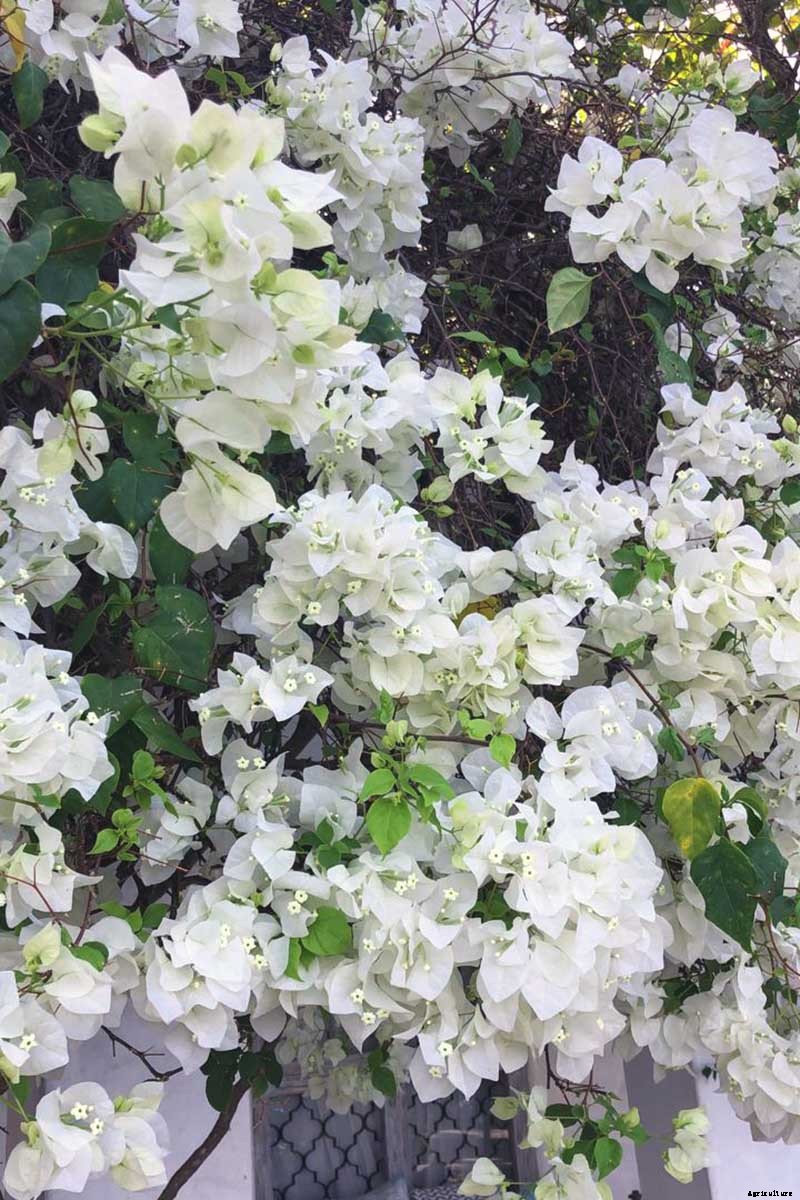
登山用の品種は、パーゴラやその他の場所でトレーニングを行うと、非常に効率的な保護を提供します。
ブーゲンビリアに覆われた排水管を登る人は誰もいません。その装飾的な魅力はあなたの風景がエレガントに見えることを可能にします、 同時に、不要な訪問者に対する効果的な防御を提供します。
「サンディエゴレッド」ブーゲンビリア
「サンディエゴレッド」は見事な真っ赤な品種です。登山品種、 それはあなたの風景にポップな色を追加します。
あなたはから利用可能な10から12インチの植物を見つけることができます アマゾン経由のサラガーデン 。
それを植える場所を選択するときは注意してください、 特に子供やペットがいる場合は、 樹液は毒ツタと同様の不快な皮膚反応を引き起こす可能性があるためです。
7.カリフォルニアのフクシア
フクシア開花グーズベリーとしても知られています。 Ribes speciosum は、春に真っ赤な花が咲き乱れ、下にぶら下がる落葉低木です。 に似ています フクシア –植物は関連していませんが。

高さ9フィートまで成長し、 R.speciosum 棘で覆われている茎があります、 各茎の節に3本の長いとげが突き出ています。
カリフォルニアとバハカリフォルニア原産、 この植物は、ゾーン7以上の栽培者に適しています。 日陰または部分日陰の場所で繁栄します。それは干ばつ耐性があり常緑樹であり、過度の暑さと厳しい干ばつ条件で葉を失うだけです。
食用グーズベリー 初夏に熟します。彼らは苦いです、 しかし、砂糖をたっぷりと組み合わせると、 調理してジャムやジャムにすることができます。

成長しやすい、 カリフォルニアのフクシアはほとんどすべての土壌で繁栄します。 そして一度確立されると、 自分の面倒を見るでしょう。成熟時に6〜8フィートの高さに成長し、 あなたはそれを悪質な生け垣に剪定することができます、 または窓の下のベッドに植えます。
繊細な花はハチドリにはたまらない、 戦略的な場所に美しい標本植物を作ります-たとえば、 柵の内側の日陰の隅に。
剪定を続けると、より低い障壁を越えて可視性が維持されます。 または、それを高くすることを許可すると、招待されていない訪問者が乗り越えようとした場合に厄介な驚きをもたらす可能性があります。
この植物を扱うときは注意してください、 大きなとげは自分の心を持っているように見えるので、 衣類や軽い手袋を簡単に破ります。
とげのある茎は、ほんの少し触れるだけで採血します。歩道に沿って植えることを避け、 または、メンテナンスのためにアクセスする必要がある領域。

カリフォルニアのフクシア
そして覚える、 窓の下に植えると、 十分に剪定し、別の脱出ルートがあることを確認してください。 あなたがあなたの家から急いで後退するのを打ち負かす必要があるならば。
あなたは利用可能な植物を見つけることができます ネイチャーヒルズ保育園から 。
8.中国のナツメ
あなたの防御的な植栽が二重の義務を果たし、食用の収穫を提供するのが好きなら、 次に、中国のナツメの木を考えてみましょう。 Ziziphusナツメ 。
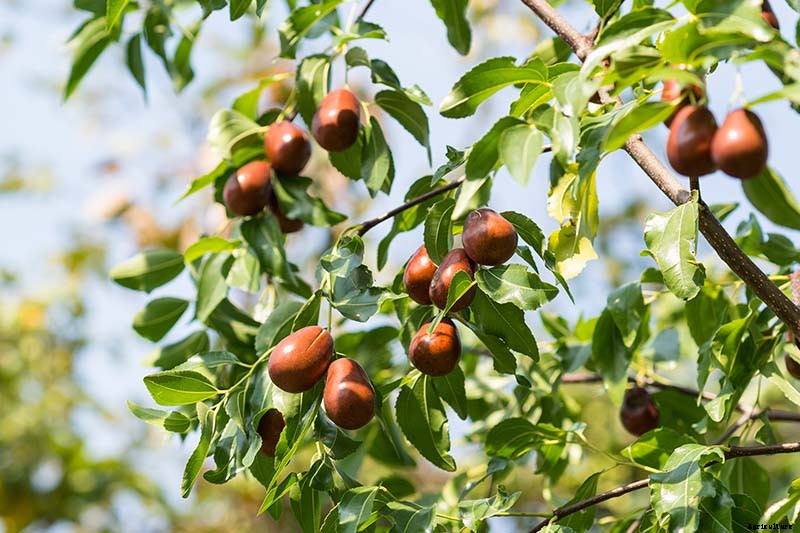
この小さな観賞用の木は豊富な果物を提供します、 「ナツメ」または「ナシ」と呼ばれることもあります。
15〜40フィートの成熟した高さに成長し、 品種によっては、 中国のナツメは、よりコンパクトなサイズを維持するために剪定することができます。
近くに植えられたいくつかは、定期的な剪定で大きな生け垣を作ることができます。ゾーン5〜11の栽培者に適しています。 これらの木は成長しやすいです、 水はけの良い土壌と日当たりの良い場所が必要です。

中国原産、 彼らは4年以上にわたって栽培されてきました 000年、 の種 ナツメ 属は温帯と熱帯の世界のいたるところに見られます。品種によっては、 彼らはとげがあるか、とげがないかもしれません、 だから買い物をするときはこれを覚えておいてください。
若い茎には、衣服を引き裂き、皮膚を突き刺す可能性のある厄介なとげがあります。 しかし、これらの木は、成長するほど、徐々にとげが少なくなります。
あなたの中国のナツメをとがった状態に保つために、 より多くの新しい成長を促進するために、定期的に剪定する必要があります。 よりふさふさした形を維持します。
柵に沿った植栽に適しており、 背の高い生け垣として、 または脆弱な地域の標本植物として、 中国のナツメは侵入者に対する優れた保護を提供します。
「ShanxiLi」はとげのある、 ゾーン5〜9の栽培者に適した干ばつ耐性品種で、 ジューシーなフルーツ。それは水はけの良い土壌のある完全な太陽の場所で繁栄し、高さ15〜20フィートの成熟した高さに達します。

中国のナツメ「ShanxiLi」
いくつかを近くに植えて、生け垣に剪定し、 または個別に成長します。
「ShanxiLi」を見つけることができます ネイチャーヒルズ保育園で入手可能 。
9.チョヤサボテン
群れネズミから何かを学びましょう、 しましょうか?砂漠のウッドラット、 トレーディングラットとも呼ばれ、 米国の砂漠地帯に広く分布しています。彼らは20インチの長さまで成長することができます、 尻尾を含む。

これらの特定のラット、 属から ネオトマ 、 巣を作り、望まない訪問者を締め出すいくつかのユニークな方法を発見しました。アメリカドクトカゲなどの侵入者は、げっ歯類の家族に壊滅的な打撃を与える可能性があります。 そうでなければ静かな生活を送っている人。
それが豊富な地域では、 パックラットは、チョヤサボテンの鋭いとげのある茎を集め、これらの略奪する部外者からの保護として、巣の入り口に配置します。
茎を集めることはお勧めしません、 しかし、注意深く配置されたいくつかのコラは、招待されていないゲストに心配事を与えるでしょう。
チョヤサボテン、 ジャンピングサボテンとしても知られています。 メキシコと米国南東部の砂漠地帯に自生しています。ゾーン8以上の栽培者に適しています。 ほとんどのサボテンと同じように、 彼らは乾く必要があります、 繁栄するための乾燥した条件。

22種あります Cylindropuntia 属、 そして最も有名なのはテディベアサボテンです、 C. bigelovii 、 その柔らかさで、 毛皮のような外観。
間違いなく、 「毛皮」は、丸い茎から外れ、無防備な通行人を簡単に捕まえる多数のとげのある棘で構成されています。
実際にジャンプしているように見える植物のとがった部分はジャンプしません、 それらは植物に非常に緩く付着しているだけです、 そして、たくさんの小さな棘がすぐ近くにあるものを引っ掛けます。
取り除くのが苦痛、 あなたがあなたの財産にこれらの植物のカップルを持っているならば、 誰もあなたに予期せぬ訪問をしたいとは思わないでしょう。

テディベアのキリンドロプンティアは成長が遅いですが、 高さ3〜5フィートで頂点に達する枝分かれした茎を持つ直立した植物。
小さな標本はフェンスの内側に置くことができます、 またはロックガーデンの一部として、 バレルサボテンなどのサボテンの親戚が植えられています。これらの植物を扱うのは難しいですが、 そのため、メンテナンスが必要になる可能性のある家の近くでそれらを育てることはお勧めしません。
それらは一度確立されるとお手入れが簡単です、 彼らは非常に少ない水を必要とし、乾燥した土壌で繁栄するので。過度の水やりは根を腐らせ、植物を殺します。
あなたは通常、保育園や園芸用品センターでチョヤサボテンを見つけることができます、 しかし、彼らがうまく成長する地域でのみ。
10.セイヨウヒイラギ
セイヨウヒイラギ、 セイヨウヒイラギ 、 クリスマスホリーまたはイングリッシュホリーとしても知られています。この常緑低木は、霜と干ばつに強いです。

南および西ヨーロッパ原産、 米国の一部の地域ではやや侵襲的であると考えられていますが、 執筆時点では、 それは禁止されていません。
革のような、 濃い緑色、 光沢のある葉にはとげのある縁があり、 衣類に簡単に付着し、 または皮膚を引き裂きます。密集した、 とげのある葉はヒイラギを理想的な生け垣にします、 常緑であり、 一年中見栄えがします。
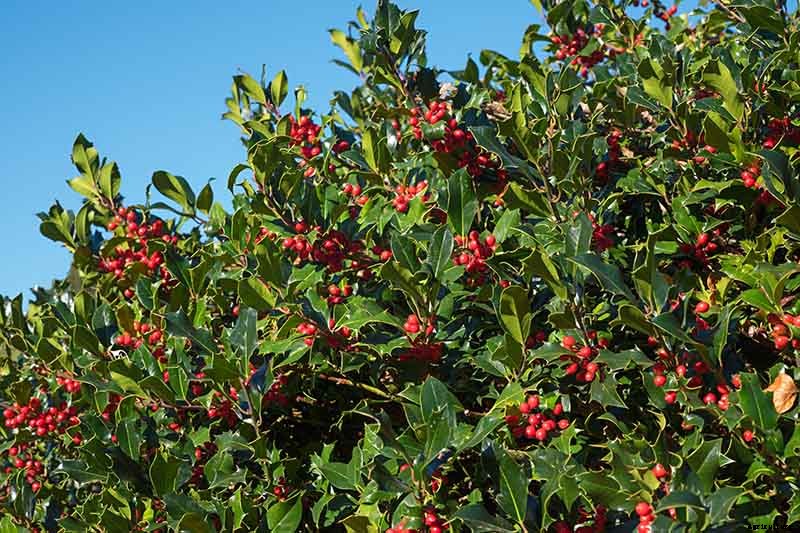
ゾーン5〜9の栽培者に適しています。 セイヨウヒイラギは、完全な日光または部分的な日陰の場所で成長しやすいです、 そして一般的に、その原産の英国の森林地帯で成長している下層低木として見られます。
急成長中です 定期的な剪定を行うと、すぐにとげのあるものが得られます。 あなたの周囲を保護するための侵入不可能な障壁。

セイヨウヒイラギには200以上の品種があります。 斑入りの葉を持つものもあります。それらのほとんどは、人間やペットに有毒な真っ赤なベリーを生産します、 したがって、植える場所を決定するときは、このことを念頭に置いてください。
ホリーはほとんどの土壌条件に耐性があり、 それは定期的な湿気を必要としますが。植物を最高の状態に保つために、 バランスの取れたアプリケーション、 春に年に一度の徐放性肥料をお勧めします。
「ブループリンセス」は、秋に真っ赤な果実を生み出す濃い青緑色の葉を持つ雑種品種です。

「ブループリンセス」セイヨウヒイラギ
10〜12フィートの成熟した高さで、 そして8から10フィートの広がり、 この急成長している常緑樹は、完璧なとがった生け垣になります。
#1コンテナの植物は ネイチャーヒルズ保育園で入手可能 。
11.いばらの冠
ユーフォルビアミリイ 常緑多肉植物です、 ゾーン9-11の庭に適しています。一般にイバラの冠として知られています。 キリスト植物、 またはキリストのとげ、 の枝 E. milii はりつけでイエス・キリストが身に着けていたと言われています。

この成長の遅い低木は、高さ6フィートまで成長します。 枝や茎にとがった棘があります。赤、 ピンク、 または、花びらのような苞葉のある白い花が、光沢のある薄緑色の葉の中に一年中現れます。
樹液は有毒であり、皮膚の炎症を引き起こす可能性があります、 したがって、この植物を扱うときは注意が必要です。水はけの良い土壌の太陽が降り注ぐ場所で育ち、水をかけすぎないように注意してください。 濡れた足は根腐れを引き起こす可能性があるため。
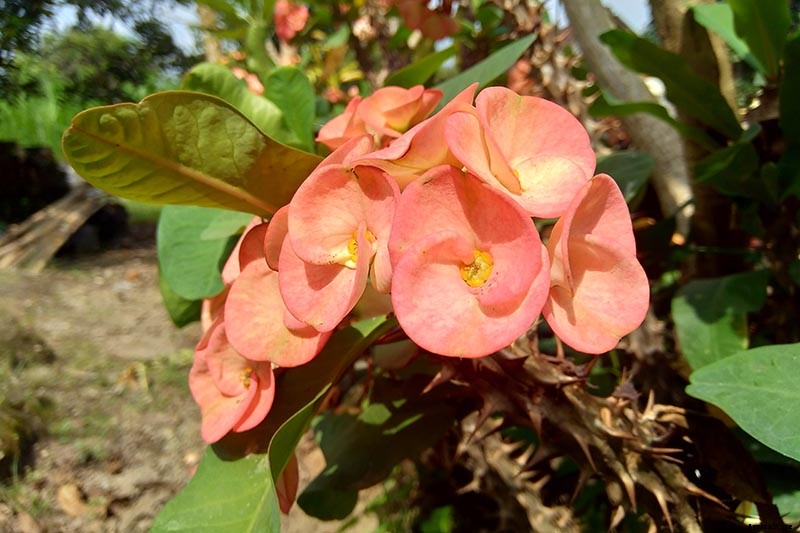
いばらの冠は庭に装飾的な興味を与えます、 そしてそのとげのある枝は、最も永続的な侵入者の一時停止を除いてすべてを与えます。
窓の下に植える、 柵の内側に、 または詐欺師を阻止するためにあなたの財産の周りの脆弱な場所で。
若い植物の目立たないことは、非公式の生け垣として植えられたとき、上からの良好な視認性を提供します。冬に、 よりコンパクトな形状を維持するために植物を剪定することができます、 ただし、とげは悪質な場合があるため、革手袋と適切な保護服を着用してください。

いばらの冠はコンテナの中でよく育ちます、 水に浸からない限り、 デッキやパティオに便利なバリアを提供できます。 または出入り口の横に。
寒い場所では、 それは装飾的な観葉植物を作ります、 そして通常2フィートの高さで最高になります。戦略的な屋内配置は、脆弱な窓の内側を保護することができます。 子供やペットがいる場合は注意が必要ですが。
茎の挿し木で簡単に繁殖し、 利用可能なさまざまな品種があります、 それらの多くはハイブリッドです。
12.悪魔のウォーキングスティック
アラリアスピノサ は、平均してゾーン4〜9で繁殖する落葉低木です。 水はけの良い土壌、 完全または部分的な太陽の場所。
ヘラクレスクラブおよびアメリカザンショウとしても知られています。 悪魔のウォーキングスティックは、その枝や茎にある密な棘にちなんでそのように名付けられました。大きな葉もとがった棘で武装しています。

米国東部原産、 高麗人参科のこのメンバー、 ウコギ科、 夏の終わりに咲き、ミツバチや他の花粉交配者を魅了する派手な白い花が咲きます。
急成長、 それは簡単に自己シードします–不要な場所に若い標本がポップアップします。
小さな、 食べられないベリーは開花後に現れます、 とによると USDA森林局 、 ルーツ、 茎、 ベリーは歴史的にネイティブアメリカンや初期の入植者によって薬用に使用されてきました。
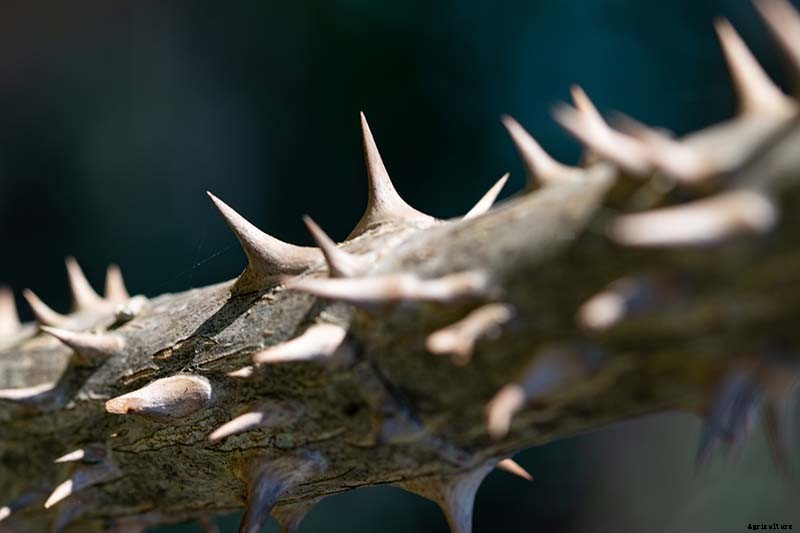
剪定しておくと、 悪魔のウォーキングスティックは、ずんぐりした状態を維持します、 コンパクトなフォルム、 しかし、それは高さ20フィートまでの大きな木に成長する可能性があります。
定期的な剪定は活発に奨励します、 ふさふさした成長。森林地帯の端で自生しているのが一般的で、密集して形成されます。 とげのある痛みの茂み。
広がる傾向があるので、家から離れた場所に植えるのが最適です。 とげの密な障壁として、より大きなプロパティで役立ちます。
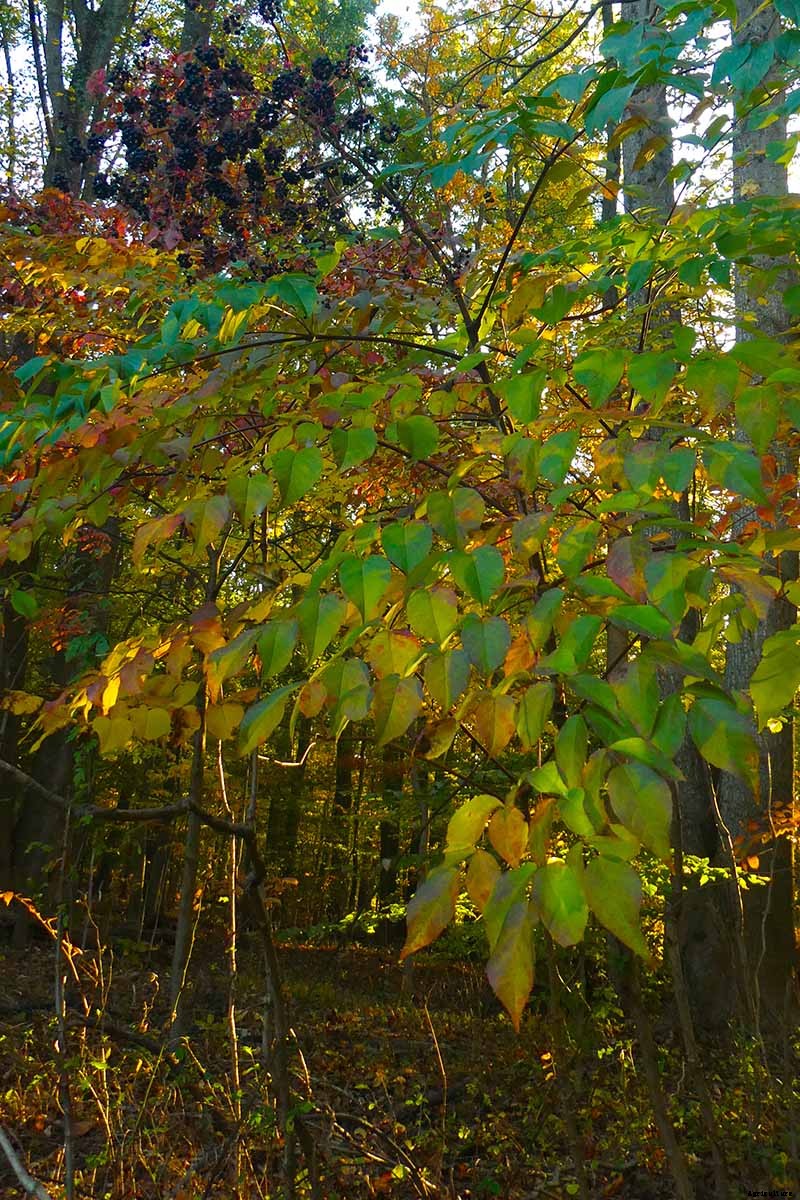
葉が落ちる冬の間、 それは非常に魅力的ではない可能性があります、 ですから、装飾的な魅力のためにこれを植えることはありません。
悪魔のウォーキングスティックは、地元の保育園や園芸用品センターでは見つけるのが難しい場合があります。 しかし、近くで成長しているものを見つけたら、 種子や茎の挿し木から簡単に繁殖します。
13.ジャイアントルバーブ
その名前が示唆するものとは反対に、 巨大なルバーブ(恐竜の餌としても知られています)は、パイ作りに使用するルバーブとは密接な関係がありません。 オニブキ is native to Brazil and thrives in Zones 7-10.

This fast-growing herbaceous rhizomatous perennial loves moist, rich soil, and will grow enormous leaves, up to six feet wide.
It’s a big plant, growing up to eight feet high, with a spread of 12 feet at maturity. The stems and underside of the leaves are covered in prickles and make an impressive, impenetrable barrier.
The stalks and leaves are toxic, and the sap can cause skin irritation and rashes. In the early summer, large flower stalks will appear with cone-shaped inflorescences of tiny red flowers.

によると Bruce A. Osborne and Janet I. Sprent 、 from the Botany Department at University College, Dublin, molecular research indicates that the genus Gunnera has been in existence for over 95 million years.
So perhaps it was dinosaur food, 結局。 It certainly looks like something that would have grown amongst the giants.

An impressive ornamental plant, giant rhubarb is ideal for swampy wetland locations, and quickly creates a barrier that no one, not even my pet dinosaur, is going to want to try and breach.
Please don’t try and eat it, and wear protective clothing when you are handling the leaves or the stems. Plants can be obtained from local nurseries and garden centers and are easily propagated by seed or root division.
14. Hardy Orange
Hardy orange, Poncirus trifoliata, is native to China, and is a close relative of the citrus orange we know and love. Hardy to Zone 5, this multi-branched deciduous shrub – or small tree – provides ornamental interest in the garden.

The fragrant white blossoms appear in late spring and give way to small fruit in early fall. The fruit は 食用、 but extremely sour tasting – you won’t be squeezing it for your morning orange juice.
The branches are covered with evil-looking two-inch-long thorns, and with a dense, twisting growth habit, it will provide an excellent barrier.
With a mature height of 15-20 feet, this plant responds well to pruning and can be fashioned into a formal or informal hedge.

Although deciduous, the stems remain green throughout the winter, after the leaves have dropped.
Sometimes called the trifoliate orange – because the foliage has three leaflets – P. trifoliata was first introduced to the US in the mid-1800s. Various cultivars are available, including the dwarf ‘Flying Dragon.’
‘Flying Dragon’ is ideal to plant as a hedge, growing up to five feet tall, and it responds very well to pruning. It has densely tangled stems covered in vicious thorns.

Hardy orange thrives in a full sun location, with organically rich, 水はけのよい土壌。 It is drought and heat tolerant, and will survive temperatures as low as -5°F.
Ideal as a perimeter barrier, or in vulnerable corners of your property, take care when planting near walkways or if you have children and pets. Remember to wear gloves and suitable protective clothing and eyewear when working with this plant.
15. Hawthorn
Hawthorn is a deciduous flowering shrub or small tree of the Crataegus 属。 Native to temperate regions of Europe, アジア、 and North America, it is commonly seen in cottage gardens, with pretty blooms in various different colors including pink, 赤、 白い、 and bicolored.

Most species grow in a dense clumping form, and produce small, edible berries in the early fall.
These tart fruits can be used to make jams and preserves, and have been used in herbal remedies and in traditional Chinese medicine.

The Washington hawthorn, C. phaenopyrum 、 sports one- to three-inch-long thorns on its graceful, arching branches.
This species grows up to 25 feet tall at maturity with a spread of 18-20 feet. Its delicate blooms are white and the foliage turns a deep reddish-brown in the fall.

Washington Hawthorn, C. phaenopyrum
Suitable for growers in Zones 4-8, the Washington hawthorn enjoys a full sun location and average, moist but well-draining soil.
This is a good option if you are looking for a spiky, yet decorative tree.
You can find three- to four-foot-tall bare root Washington hawthorn plants at the Arbor Day Foundation Store 。
The English hawthorn, C. laevigata 、 is much loved in English country gardens. Various cultivars are available, such as ‘Rosea Flora Pleno, ’ with pink and white blooms that cover its spiky branches all summer long.
‘Paul’s Scarlet’ will delight with bright red flowers, and can be pruned into a clumping form, to provide a spiky barrier at the back of borders, or to cover up vulnerable areas of your yard.

English Hawthorn, C. laevigata
English hawthorns are suitable for gardeners in Zones 5-8, and thrive in full sun locations with moist, 水はけのよい土壌。
You can find English hawthorn seeds アマゾン経由で入手可能 。
16. Honey Locust
The honey locust, Gleditsia triacanthos 、 is a fast growing, deciduous tree native to the central US.
It looks like something out of your worst nightmare, with large clumps of thorns protruding from its trunk and branches – some up to eight inches long.

Honey locust thrives in Zones 3-8, and will grow into a shrubby, thorny clump unless pruned to encourage a single trunk.
A member of the Fabaceae family, honey locust flowers in late spring, with fragrant, cream-colored blooms.
It produces seed pods that mature in the fall, and bright green foliage gives way to autumnal yellow.

According to an article by Robert J. Warren, から Department of Biology at Buffalo State University 、 the honey locust was cultivated by the Cherokee people for its medicinal and culinary properties.
This fast-growing ornamental tree can reach a lofty 90 feet tall at maturity. It thrives in average soil, and is drought, 塩、 and heat tolerant.

Honey Locust Bare Root Plants
You can find bare root honey locust trees ホームデポで入手可能 。
The Caspian locust, Gleditsia capsica 、 is native to central Asia and locations bordering the Caspian sea. Suitable for growers in Zones 6-9, even the thorns on this tree have thorns!
Young specimens provide a nasty barrier, and as it matures, the trunk will show no mercy to opportunist climbers.

Caspian locust thrives in full sun and well-draining, but average soil.
The thorns on both of these species are monstrous, and need to be handled with respect. They will easily rip through all but the toughest leather gardening gloves, and eye protection is essential.
17. Japanese Quince
Native to eastern Asia, the Japanese quince, Chaenomeles speciosa 、 is suitable for growers in Zones 5-9.
This is a thorny, deciduous flowering shrub that produces tart, edible fruit. Growing in a mounded form, it matures to five to six feet tall and wide.

Its tangled, prickly stems can be pruned into a hedge, providing a spring profusion of pretty blooms in shades of pink, 赤、 or white.
Several cultivars are available, such as ‘Falconnet Charlet, ’ that blooms in early spring with salmon-pink flowers. It is suitable for planting as a thorny privacy screen, or as a back of border specimen plant.
‘Double Take Orange’ is a compact cultivar that tops out at four to five feet tall, and produces clusters of double-petaled bright orange blooms in early spring.
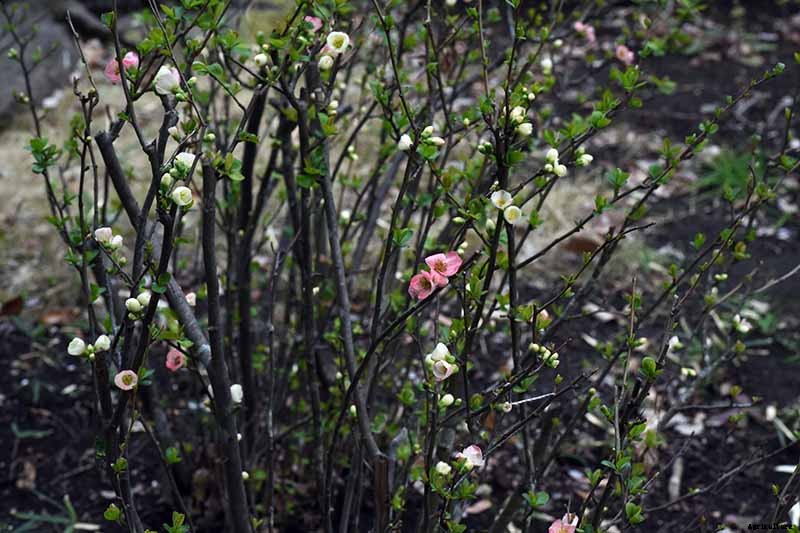
Ideal for low hedging, or planting underneath windows or as a part of mixed borders, it has ornamental appeal as well as providing a thorny welcome to anyone who comes close.
A white-flowered cultivar, ‘Nivalis’ is suitable for training up a trellis against a wall, to provide a pretty, but spiky climber. Untrained, it will top out at eight feet tall, with the same characteristic tangled, thorny branches.
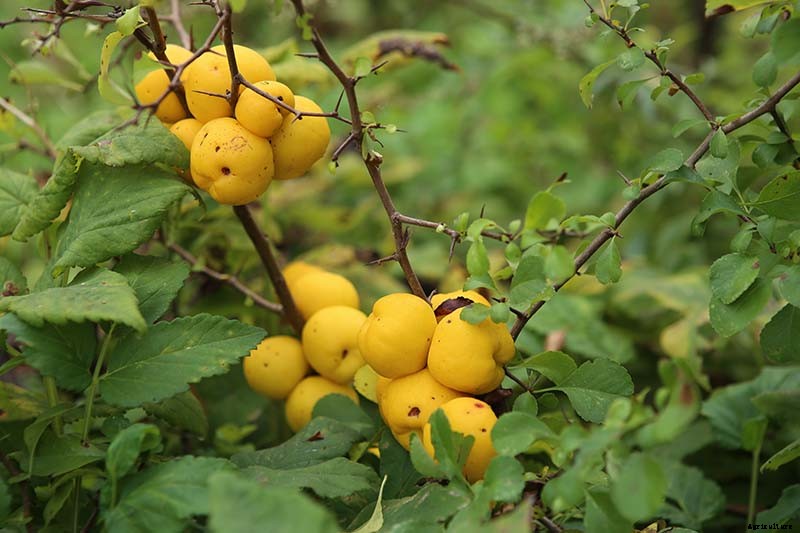
ツバキ is a smaller species that thrives in Zones 5-9. It grows two to three feet tall and three to six feet wide in a dense, branching form. A profusion of flowers bursts forth in early spring, followed by light green foliage.
Sometimes called dwarf quince, this species is suitable for low hedging, or planting in any location where you require visibility over the top of plantings.
Japanese quince is fast growing, and performs best in a full sun location with well-draining soil. It’s highly adaptable and will tolerate dry or clay soil as long as there is good drainage.
確立されると、 plants are drought and heat tolerant.
18. Mesquite
If you live in certain parts of Texas, you’ll no doubt be familiar with the thorny mesquite bush that is almost impossible to remove once it’s established.
Sometimes referred to as the “devil tree, ” mesquite has vicious thorns that can pierce a car’s tires.

NS Prosposis genus – one of the few desert-growing legumes – contains about 40 species of shrubby deciduous trees, native to the southwestern US and Mexico.
They thrive in arid and semi-arid landscapes and with their long, spreading taproots can quickly outcompete other species in their quest for water.
The US native species, P. glandulosa 、 also known as honey mesquite, と P. velutina 、 or velvet mesquite, thrive in dry, arid areas of USDA Hardiness Zones 7-9.
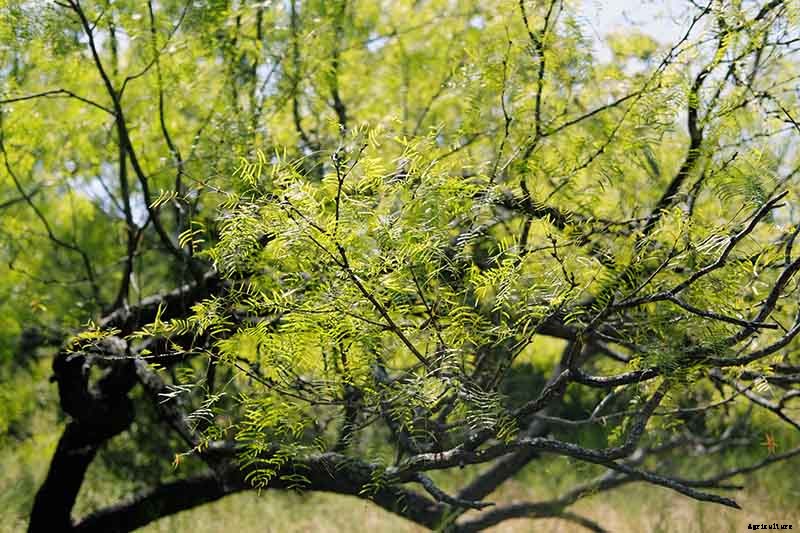
Non-native species, such as the Chilean, P. chilensis, and the Argentine, P. alba 、 are suitable for growers in Zones 9-11. Mesquites are adaptable to a wide range of growing conditions, and can tolerate drought and flooding.
With delicate green foliage, they produce creamy white flowers in spring, followed by seed pods that ripen in the fall.
Mesquite is a very effective perimeter plant, but it can be invasive. Young plants are fast-growing, and the shoots will spread rapidly and crowd out other plantings. As the shrub matures, its growth slows, and fewer thorns adorn the branches.

If you keep trimming the young branches, the plant will create an impassable, many-stemmed thorny barrier. Left to its own devices, it will eventually grow into a scrubby tree – and can reach up to 30 feet tall at maturity.
Mesquite wood is often used to smoke meat, imparting a strong, 素朴な味わい。 The hardwood burns fast and hot, making it useful as firewood.
19. Ocotillo
If it’s got spikes, lives in the desert, and looks weird, it’s a cactus, 右?番号、 not if it’s an ocotillo.
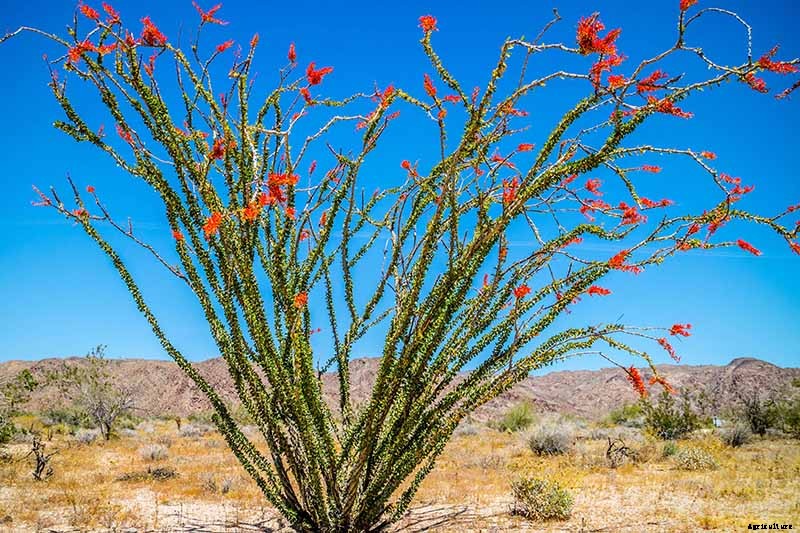
Fouquieria splendens might share habitat with our favorite desert-dwellers, but it’s not a true cactus.
NS Fouquieria genus contains 11 species of semi-succulent desert plants, and includes the bizarre-looking boojum tree, F. columnaris – often described as resembling something straight out of a Dr. Seuss book.
The ocotillo is known variously as candlewood, coachwhip, desert coral, Jacob’s staff, and – to add to the confusion – Jacob cactus and vine cactus.
Multiple long, 直立、 spiky canes grow from a short central trunk, and burst forth with dense clusters of glorious red blooms in springtime, attracting hummingbirds and other pollinators.

Native to the southwestern US and northern Mexico, ocotillo – “little torch” in Spanish – is hardy to Zone 7 and requires a full sun location and well-draining soil.
Perfect for xeriscapes, it needs very little water – overwatering will cause root rot. Rounded, fleshy leaves appear on the stiff stems soon after rain and drop quickly.
This slow-growing deciduous shrub can reach a mature height of 20 feet tall, with a spread of 15 feet.
The graceful canes are sturdy, up to two inches in diameter, and can be harvested to create a “living fence, ” something akin to nature’s razor wire.
Canes are woven together using galvanized steel wire, and buried six inches deep – some may take root, and continue growing.

While you wait for your ocotillo to provide you with enough canes for your own fencing, consider planting it up against a wall or fence – or in a vulnerable corner of your property.
It’s also suitable for a layered planting, with low-level barrel cacti or smaller agaves in front of and surrounding the ocotillo. Any would-be intruder will think twice about trying to breach that barricade!
Approach this plant with caution, and always wear sturdy gloves and eye protection when handling it.
20. Oregon Grape
The Oregon grape, Mahonia aquifolium 、 has very little to do with home winemaking – and it isn’t even a grape.
Sometimes called Oregon grape holly or hollyleaved barberry, this evergreen shrub is from the same botanical family as Berberis 、 the barberry.

Native to the western US, Oregon grape is suitable for growers in Zones 5-8. It’s easy to confuse the Oregon grape with common holly, Ilex aquifolium 、 the European native spiny-leaved hedging shrub – but they are unrelated.
Come springtime, it blooms with clusters of bright yellow, fragrant flowers that attract bees and other pollinators.

In late summer to early fall, it produces bunches of edible, grape-like berries. The tart fruit can be eaten fresh or made into jam – or the juice can be fermented into an alcoholic beverage that is unlikely to rival your vintage Claret.
Instead of sporting thorns on its branches, M. aquifolium has small, sharp spines on the leaf margins – which makes it ideal for use as a barrier hedge.
This shrub requires a part to full shade location and won’t tolerate full sun. When planted in organically rich, 水はけの良い土壌、 it will grow to a mature height of three to six feet, with a spread of two to five feet.

Oregon Grape, Mahonia
If you prefer not to prune it into a neat hedge, plant Mahonia under trees that could potentially provide cover for criminals, or on the shady side of buildings where it will readily naturalize by suckers.
You can find plants in #1 containers ネイチャーヒルズ保育園で入手可能 。
21. Porcupine Tomato
Here’s a plant that doesn’t hide its thorns shyly, buried beneath the foliage, to secretly spike an unsuspecting passerby.
Solanum pyracanthos looks like a devilish marriage between a cactus and a backyard tomato.

Large orange-yellow thorns display prominently along the branches and sprout from the leaf surface, in a decadent display of wickedness. Even the bracts surrounding the fruit have their own mini thorns.
It’s a plant that says “look at me” and “go away” in the same breath. Small purple flowers contrast with the green foliage and orange armor – appearing from late spring and lasting all through summer.
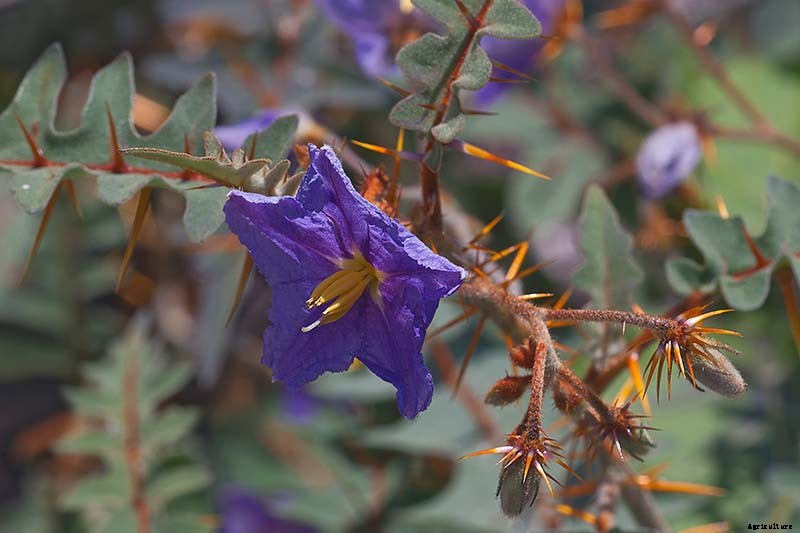
Native to Madagascar, the land of cuddly lemurs, S. pyracanthos is a member of the nightshade family, これには ポテト 、 ナス、 と トマト 。
Suitable for growers in Zones 9-11, this fast-growing evergreen shrub can reach a mature height of four feet, with a spread of up to three feet.
It requires a full sun location, with well-draining, 有機的に豊かな土壌、 and consistent moisture – and it is not frost tolerant. It will self-seed easily, and even the tiniest saplings are viciously thorned.
Plant along fence lines, in borders, in mass plantings of potential pain, or in containers to keep its size in check – just looking at one of these should send most thieves elsewhere!
Another interesting species, S. atropurpureum 、 also known as “malevolence, ” is a sturdy shrub, topping out at five feet tall at maturity with a similar spread. Dense thorns adorn its dark purple stems and grow on the top and bottom of the leaves.
Yellow flowers appear in midsummer, and give way to small green fruit that matures to bright yellow. Two or more plants grown together make for a truly malevolent thicket of dark thorniness.
注意事項:
葉っぱ、 茎、 thorns, and fruit of both species listed here are poisonous. In spite of the name, 彼らです いいえ edible tomatoes.
22. Prickly Pear
Prickly pear refers to a number of species in the genus Opuntia 、 the most cold tolerant of all cacti native to the US.
Some species, そのような O. humifusa, are cold-hardy to parts of Zone 4. This plant is traditionally grown for its edible fruit – the prickly pear, also known as nopal or tuna fruit.

The modified stems grow into flat, succulent pads that store water and are adorned with multiple sharp thorns that can penetrate the toughest leather.
In addition to this obvious body armor, the prickly pear has a second line of defense.
Tiny spines – called glochids – are thinner than a human eyelash and look a little bit like fur. At the slightest touch, they’ll embed themselves into your skin and clothes – and removal is almost impossible.

Prickly pear is easily rooted from stem cuttings, and can be kept trimmed by pruning at the joints. The fruit grows on the edge of the stems.
It produces beautiful blooms in a variety of colors – depending on the species – from yellow and red bicolored flowers to bright pink or red.
Suitable for xeriscapes and dry, arid areas, the prickly pear thrives in well-draining soil in a full sun location.
Smaller species can top out at six to 12 inches tall, while others grow to a commanding height of over 10 feet tall, in the right conditions.

Low-growing varieties are ideal for planting underneath windows, and a combination of both large and small specimens make a formidable, impenetrable perimeter barrier. Be mindful of your planting location, particularly if you have children or pets.
23. Pyracantha
Commonly known as firethorn, Pyracantha is a genus of decorative evergreen shrubs that display billows of white flowers in early summer, giving way to vibrant orange or red berries in fall.

Native to southeastern Europe, and adorned with vicious thorns along the branches, it grows in a dense form and is easy to prune into a hedge.
Suitable for growers in Zones 5-9, this is the ultimate low-maintenance, decorative security plant.

Some species, そのような P. angustifolia, grow in a compact, bushy form, and reach a mature height of four to six feet with a spread of six to eight feet. P. cocchinea is larger, with a mature height and spread of six to 12 feet.
Most varieties grow vigorously in average, 水はけの良い土壌、 and prefer a part to full sun location. The blooms and berries attract a variety of beneficial insects and wild birds.

Firethorn Pyracantha 1, 000 Seeds
Pyracantha is ideal for training up walls and fences, for a spiky welcome. It can also be used as a perimeter barrier when pruned into a hedge, or placed at the back of borders as a foundation planting or specimen plant.
You can find packets of 1, 000 firethorn seeds available via Amazon.
The Home Guard
Our home is our sanctuary, and Mother Nature provides us with plenty of options to keep us safe and secure. These are so much prettier than razor wire, 場合によっては、 just as effective.
Are you inspired to fortify your home with any of these plants? Do you have any favorites to share?以下のコメントでお知らせください!
If you are looking for more garden design inspiration – with or without thorns – try these guides next:
- 15 Creative Uses for Bricks in Landscape and Garden Design
- Update Your Landscape:Get Creative with Garden Paths and Walkways
- Your Guide to Low-Maintenance Landscape Planning





















































































